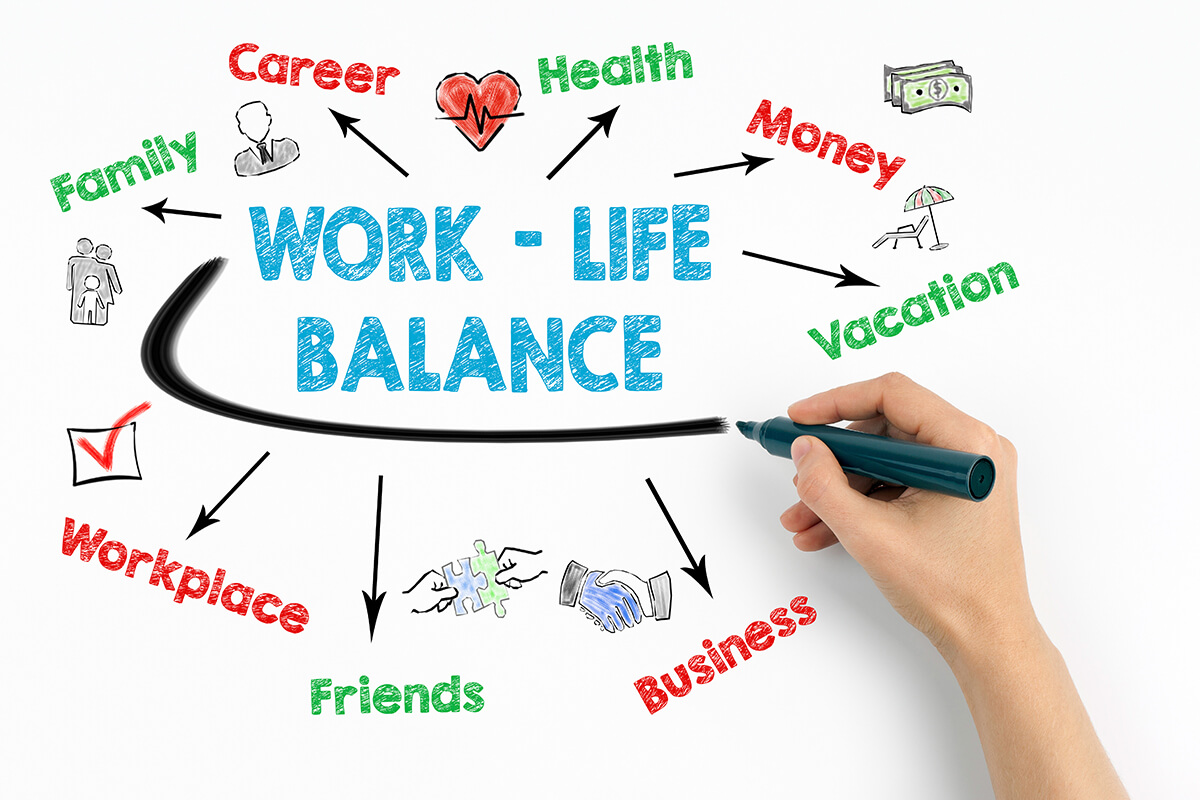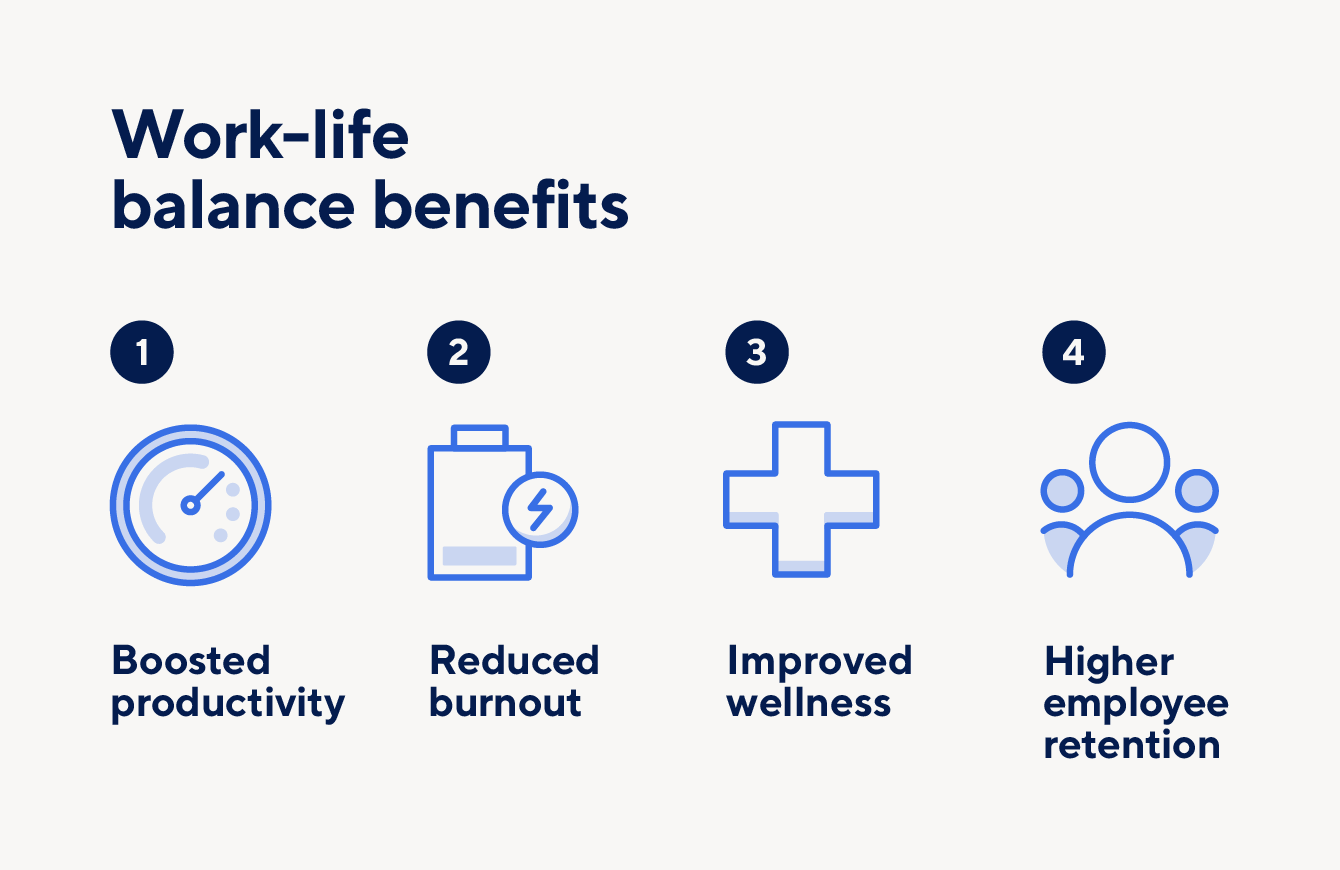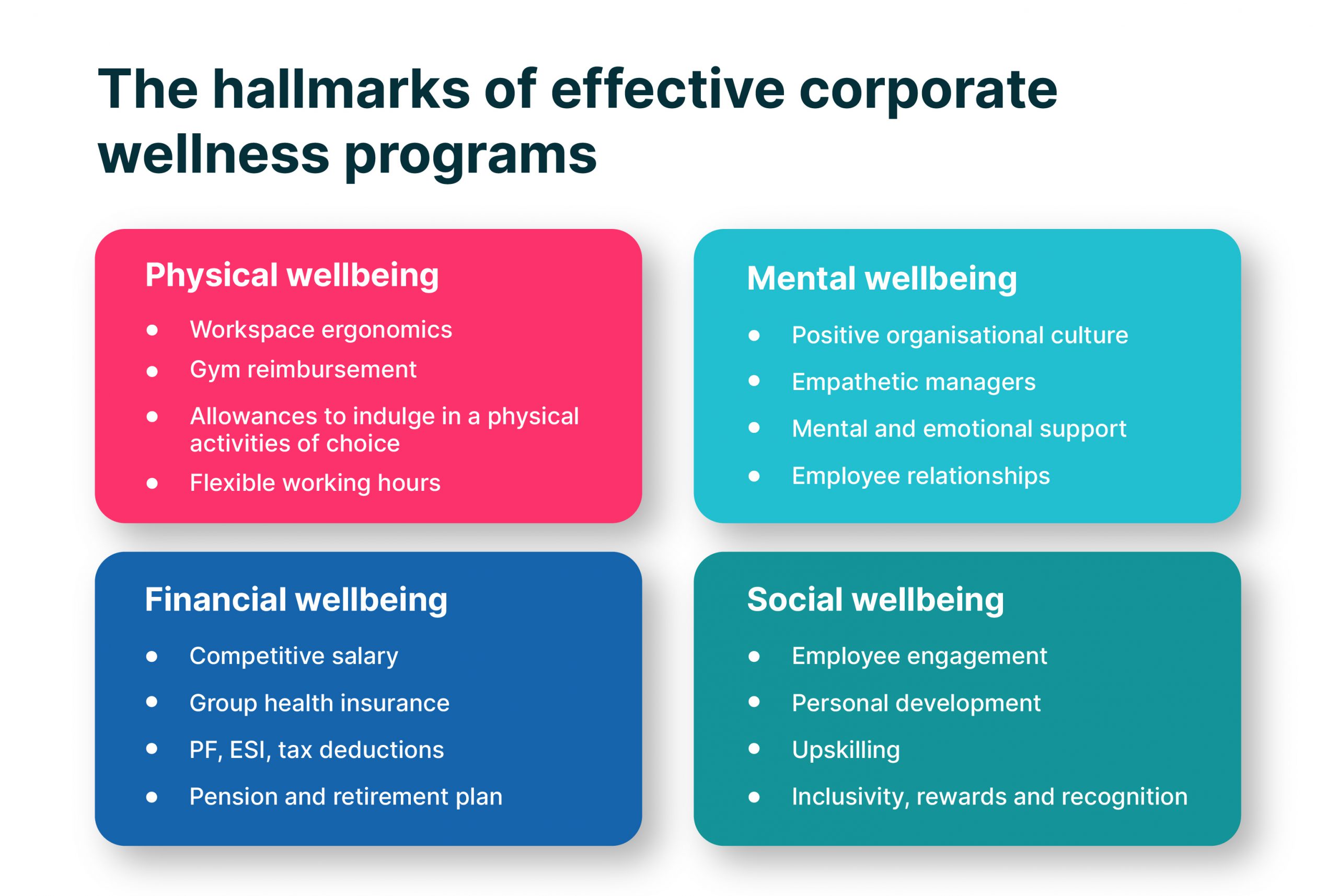How to Enhance Work-Life Balance for Your Team
Date
Jun 21, 24
Reading Time
10 minutes
Category
Other
- Introduction
- Importance of Work Life Balance
- Strategies to Enhance Work Life Balance
- Implementing Work Life Balance Initiatives: Role of Leadership
- Conclusion
- Frequently Asked Questions (FAQs)
Table of content

Introduction
More hours, more productivity?
Think again.
This seemingly logical equation often leads to the opposite. While extra hours might suggest more work is getting done, the reality can be far less productive.
Work Life imbalance not only reduces efficiency but also poses serious health risks, making employees prone to depression and anxiety, especially those clocking over 55 hours per week.
Imagine the corporate world as a high-powered engine that’s always on; without proper maintenance, even the best machines break down. This is where the concept of enhancing Work Life balance comes into focus.
Addressing this balance isn’t just about cutting hours; it’s about rethinking how, when, and where we work.
Studies reveal that 67% of employees reported improved work life balance with remote work, suggesting flexibility could be key. Meanwhile, poor work life balance is implicated in up to 50% of employee turnover, underlining the high stakes involved.
So, how can teams achieve this ideal equilibrium? This guide delves into practical strategies to enhance work life balance, ensuring teams are not just surviving but thriving.

Importance of Work Life Balance
Work life balance is more than a buzzword; it's a critical strategy for modern businesses and their employees. Below, we explore what it involves, why it matters, and the hurdles it faces.
Definition
Work life balance refers to the equilibrium where individuals allocate appropriate time and energy to their work and personal lives. This balance differs from person to person, but it aims to reduce stress and prevent burnout by allowing time for family, friends, hobbies, and rest.
Benefits
The advantages of a healthy work life balance extend across various dimensions:

- Health: Employees with balanced lives tend to have lower risks of mental health issues like depression and anxiety, particularly crucial for those typically working over 55 hours per week. A healthy work-life balance improves sleep, lowers stress, boosts the immune system, and makes you less prone to heart diseases like stroke.
- Productivity: Well-rested and stress-free employees are more productive, creative, and engaged. Overworking leads to diminishing returns with potential increases in errors and declines in the quality of work.
- Retention: Companies that support a good work-life balance see higher employee retention rates. Poor balance contributes to 20-50% of employee turnover, so fostering a balanced environment can significantly impact company loyalty and reduce turnover costs.
- Attractiveness as an Employer: Businesses that champion work life balance are often viewed as more attractive, helping to attract and retain top talent.
Challenges
Despite the clear benefits, achieving work life balance comes with challenges:
- Cultural Norms: In many industries and regions, long hours are the norm, and deviating from this can be seen as a lack of dedication or ambition.
- Management Resistance: Some managers may resist implementing flexible work policies due to concerns about productivity losses.
- Inequity: Not all roles can easily adapt to flexible schedules or remote work, leading to disparities among employees in different departments or job functions.
Understanding these facets helps underline the necessity of work life balance in fostering a sustainable, productive, and happy workforce. Businesses need to navigate these challenges thoughtfully to build a supportive work environment.
Strategies to Enhance Work Life Balance
Enhancing work life balance is essential for maintaining a healthy, productive workforce. Here are some practical strategies organizations can implement to help employees better balance their professional and personal lives.

Flexible Work Arrangements
Flexible work arrangements are a great way to implement work-life harmony. It makes employees feel like they are valued in the organization and that the organization is working in sync with them.
Flexible work arrangements offer employees control over when, where, and how they work. Here are some ways through which you can implement flexible working arrangements.

- Remote Work: Allowing employees to work from home can significantly improve work life balance. With remote work, employees save on commuting time and often report higher productivity and satisfaction. It's crucial, however, to establish clear guidelines to ensure that productivity remains high.
- Flexible Hours: Providing options for flexible working hours can accommodate personal needs, such as child care, education, or other responsibilities. This flexibility helps employees feel less stressed about juggling daily commitments with work responsibilities.
- Compressed Work Weeks: Some organizations offer a four-day workweek, where employees work longer hours but fewer days. This has been shown to boost morale and productivity while giving employees an extra day for personal activities.
- Setting Clear BoundariesEstablishing clear boundaries between work and personal life is vital to prevent burnout. Clear communication protocols and respect for personal time help maintain these boundaries effectively.
- Communication Protocols: Establish clear rules about after-hours communication. For instance, emails should not require immediate responses after 6 PM or on weekends unless in cases of emergency. This helps employees disconnect from work and reduces burnout.
- Respect for Personal Time: Managers should lead by example by respecting their own boundaries and encouraging their team to do the same. This creates a culture where personal time is valued as much as work time.
Encouraging Time Off
Encouraging employees to take time off for rest and recuperation is essential for sustaining long-term productivity and mental health. Policies that promote taking regular vacations can prevent burnout and enhance job performance.
- Mandatory Leave Policies: Encourage employees to take their allocated vacation days by implementing 'use-it-or-lose-it' policies where vacation days expire if not taken. This ensures that everyone takes time off to recharge.
- Unscheduled Leave Options: Allow flexibility for unscheduled leave days for mental health and well-being. This can help employees manage stress without worrying about the repercussions of taking a day off at short notice.
Health and Wellness Programs
Implementing health and wellness programs addresses employees' physical and mental health needs. Activities like fitness classes, stress management workshops, and health screenings support overall well-being.

- Physical Wellness Programs: Implement programs that promote physical health, such as gym memberships, yoga classes, or team sports. Physical activity is known to reduce stress and improve mental health.
- Mental Health Support: Provide access to mental health resources, such as counseling services or workshops on managing stress and anxiety. Educating employees about mental health can reduce stigma and encourage them to seek help when needed.
- Wellness Challenges: Organize wellness challenges that encourage healthy behaviors among employees. These include hydration challenges, step contests, meditation, and mindfulness sessions.
Regular Check-ins and Feedback
Regular check-ins and gathering feedback help tailor work-life balance strategies to actual needs. This continuous dialogue ensures that policies remain relevant and effective over time.
- Frequent One-on-One meetings: Regular meetings between managers and employees can help address any concerns regarding workload and work life balance. This keeps communication open and allows for adjustments before issues become problematic.
- Employee Surveys: Conduct regular surveys to gather feedback on work life balance initiatives. This feedback is crucial for understanding what is working and what needs improvement.
Technology and Tools
Leveraging technology and tools can streamline work processes and facilitate better communication. Using project management and communication tools effectively can reduce stress and help maintain work-life balance.
- Project Management Tools: Utilize tools that help manage and streamline workflows, which can reduce unnecessary stress and overtime. Good project management software ensures everyone is clear on deadlines and expectations, reducing the chance of last-minute rushes.
- Communication Tools: Invest in reliable communication tools that help teams stay connected without being intrusive. Tools like Slack or Microsoft Teams allow for setting status updates to "away" or "do not disturb," which helps respect personal boundaries.
Implementing these strategies requires commitment and continuous assessment, but the benefits—higher employee satisfaction, reduced turnover, and improved productivity—are well worth the effort. Companies can create a more sustainable and enjoyable work environment by prioritizing work life balance.
Implementing Work Life Balance Initiatives: Role of Leadership
Implementing work life balance initiatives effectively involves strategic planning and input from all levels of an organization. Here are some ways to introduce these changes successfully.
Leadership Commitment
Leadership commitment is crucial for the success of work life balance initiatives. Leaders must not only endorse these policies but also actively model them, demonstrating their commitment to maintaining balance in their own lives.
- Lead by Example: Senior leaders should model the work life balance policies they introduce. This includes respecting boundaries, using vacation time, and maintaining regular work hours. Leadership's behavior sets the tone for the company culture, emphasizing the importance of work life balance.
- Communicate Clearly: Regularly communicate the benefits and expectations around work life balance to ensure everyone understands and supports the initiative. Clear communication helps in building a supportive environment where employees feel valued.
Policy Development
Developing comprehensive policies tailored to the organization's and its employees' unique needs is essential. These policies should be clear, practical, and flexible to accommodate diverse work life balance needs.
- Adapt Policies to Fit Team Needs: Work life balance policies should be adaptable to different roles and individual needs within the company. Gather input from employees to tailor these policies effectively, ensuring they address specific challenges and requirements.
- Establish Clear Guidelines: Develop formal policies on flexible working hours, remote work options, and time off. Having clear, written policies helps avoid misunderstandings and ensures fair application across all departments.
Monitoring and Feedback
Regular monitoring and soliciting feedback are key to refining work life balance initiatives. This process helps ensure that the policies effectively meet employees' needs and allows for necessary adjustments.
- Implement Regular Reviews: Schedule periodic evaluations to assess the effectiveness of work life balance policies. Use tools like surveys and feedback forms to gather employee insights and experiences.
- Encourage Open Feedback: Foster an environment where employees can freely discuss their work life balance without fear of repercussions. Open feedback channels encourage ongoing dialogue and help refine policies over time.
Training and Support
Providing appropriate training and support to both managers and employees is vital. Training helps managers understand how to support their teams effectively, while support mechanisms can assist all employees in managing their work life balance.
- Train Managers: Train managers on how to support their teams in achieving a good work life balance. This includes training on recognizing burnout, managing remote employees, and applying flexible work policies effectively.
- Provide Support Systems: Establish support mechanisms such as mentoring programs, employee assistance programs, and peer support groups. These resources can help employees manage work-related stress and maintain well-being.
By focusing on these key areas, organizations can create a culture that genuinely supports work life balance, leading to increased employee satisfaction and productivity. These approaches not only improve individual employee well-being but also enhance overall organizational health.
Conclusion
In conclusion, achieving a healthy work-life balance is paramount for both employee well-being and organizational success. Companies can cultivate a more engaged and productive workforce by integrating flexible work arrangements, establishing clear boundaries, and actively supporting employee wellness—while also fostering an environment conducive to having fun at work. Leadership commitment, customized policies, ongoing assessment, and effective communication are crucial to the successful implementation of these initiatives. As the workplace continues to evolve, adapting these strategies will be essential in sustaining a harmonious balance that benefits employees and the organization alike. Emphasizing a strong work-life balance isn't merely a perk; it's a pivotal measure that can shape the future of work.
Recognizing the detrimental effects of workplace stress on productivity, Relinns Technology goes beyond traditional measures by fostering a culture where employees feel supported and valued. Central to this culture are regular recreational activities such as carrom and foosball tournaments, which serve as enjoyable respites from daily responsibilities while strengthening team bonds and promoting relaxation.In essence, Relinns Technology's commitment to balancing career growth with employee happiness exemplifies its dedication to creating a workplace that values both professional development and personal fulfillment. By prioritizing a stress-free and engaging atmosphere through thoughtful initiatives, Relinns not only enhances job satisfaction but also ensures sustained productivity and long-term success in an increasingly competitive market.

Frequently Asked Questions (FAQs)
Can you provide some good work life balance examples?
Good work life balance examples include a company offering "flex Fridays", where employees work half days, implementing mandatory vacation policies where employees must use their time off, or creating no-email weekends to ensure employees truly disconnect. Another example is providing wellness resources such as on-site fitness classes or mental health days.
How can individuals maintain work-life harmony in stressful jobs?
Ans. Maintaining work-life harmony in stressful jobs can be achieved by setting realistic goals for both work and personal life, communicating effectively with supervisors about workload, and taking proactive steps towards self-care. Integrating work and life responsibilities smoothly, such as attending a child's event during a lunch break or working from home when needed, can contribute to better work-life harmony.
What are effective work life balance tips for employees?
Practical work life balance tips include setting clear boundaries between work and personal time, learning to say no to unnecessary tasks, using flexible work options if available, prioritizing tasks efficiently, and ensuring regular breaks to refresh mind and body. Planning leisure activities and family time can reinforce these boundaries and improve overall satisfaction.
How can employers support work life balance for their employees?
Employers can support work-life balance by offering flexible working hours, remote work options, and ensuring employees feel comfortable taking time off. Encouraging a culture that does not glorify overworking and recognizes the importance of downtime is also crucial. Regular check-ins on employee well-being can help adjust policies as needed.

